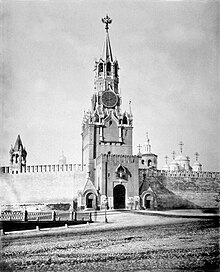Decommunization in Russia
According to public figure Andrey Zubov, decommunization should be carried out by analogy with denazification, with destalinization being a specific element of this process.
On 25 August, Yeltsin issued another decree nationalizing the property of the Communist Party, including its archives and bank accounts, and transferring their control to the RSFSR Council of Ministers.
On 6 November 1991, Yeltsin banned the Communist Party of the Soviet Union (CPSU), which had exercised pervasive control over Russian society for years.
The Parliamentary Commission for Investigating Causes and Reasons of the coup attempt was established in 1991 under Lev Ponomaryov (including also Gleb Yakunin), but in 1992 it was dissolved at Ruslan Khasbulatov's insistence.
In 1992, several People's Deputies sued Yeltsin, demanding that his 1991 decrees concerning the Communist Party be declared acts that violated the principles of the contemporary Constitution.
Unlike many other countries of the former Soviet bloc, in Russia lustration of senior Communist Party and KGB officials was staunchly resisted and has never been implemented there.
[21] Organisations such as the Memorial Society have worked on numerous projects involving witnesses to past events (Gulag inmates, Soviet rights activists) and younger generations, including schoolchildren.
[22][23][24] On 30 October 2017, Putin attempted to draw a line under the past when he unveiled the massive but controversial Wall of Grief monument in Moscow.


